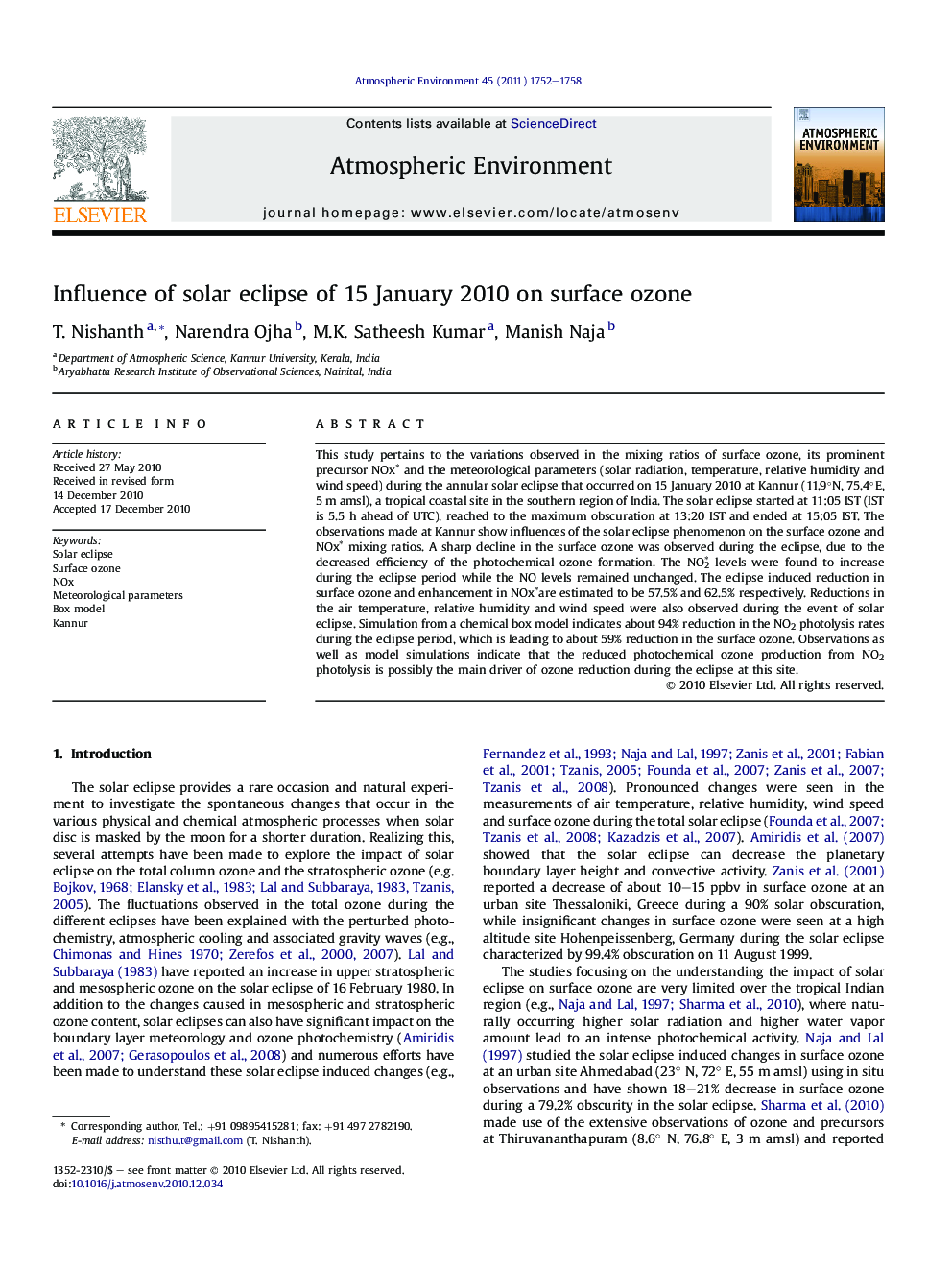| Article ID | Journal | Published Year | Pages | File Type |
|---|---|---|---|---|
| 4439960 | Atmospheric Environment | 2011 | 7 Pages |
This study pertains to the variations observed in the mixing ratios of surface ozone, its prominent precursor NOx∗ and the meteorological parameters (solar radiation, temperature, relative humidity and wind speed) during the annular solar eclipse that occurred on 15 January 2010 at Kannur (11.9°N, 75.4°E, 5 m amsl), a tropical coastal site in the southern region of India. The solar eclipse started at 11:05 IST (IST is 5.5 h ahead of UTC), reached to the maximum obscuration at 13:20 IST and ended at 15:05 IST. The observations made at Kannur show influences of the solar eclipse phenomenon on the surface ozone and NOx∗ mixing ratios. A sharp decline in the surface ozone was observed during the eclipse, due to the decreased efficiency of the photochemical ozone formation. The NO2∗ levels were found to increase during the eclipse period while the NO levels remained unchanged. The eclipse induced reduction in surface ozone and enhancement in NOx∗are estimated to be 57.5% and 62.5% respectively. Reductions in the air temperature, relative humidity and wind speed were also observed during the event of solar eclipse. Simulation from a chemical box model indicates about 94% reduction in the NO2 photolysis rates during the eclipse period, which is leading to about 59% reduction in the surface ozone. Observations as well as model simulations indicate that the reduced photochemical ozone production from NO2 photolysis is possibly the main driver of ozone reduction during the eclipse at this site.
Research highlights► Demonstration of lower ozone due to declining solar flux during the solar eclipse. ► In contrast to the ozone, NO2 levels are found to be increasing during the eclipse. ► Air temperature, relative humidity and winds also show reductions during eclipse. ► Observed decrease (57.5%) and simulated decrease (59%) in ozone agrees well. ► Reduction in NO2 photolysis rate (94%) is the major contributor in ozone decrease.
